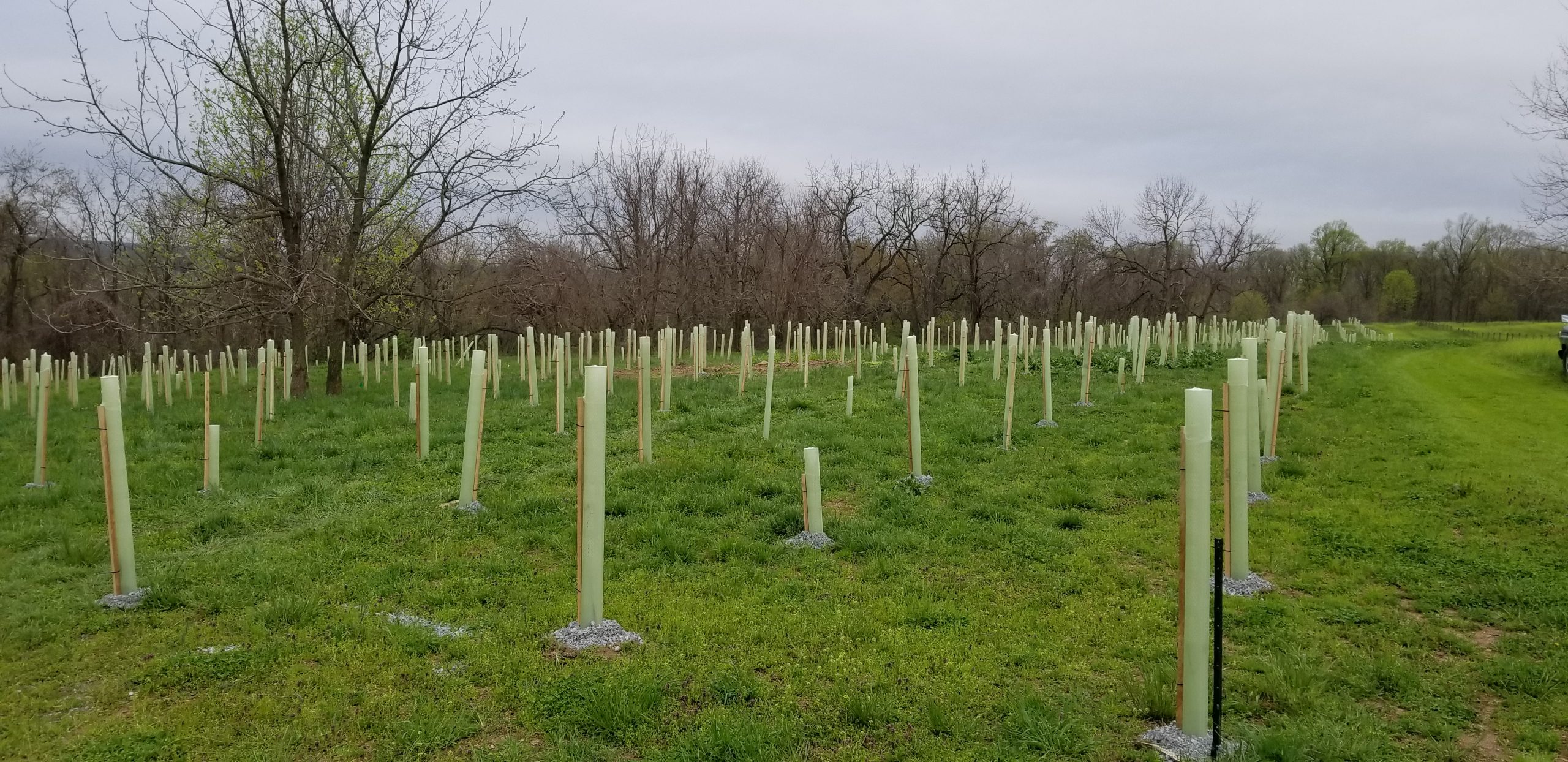Author:
David Wise
Co-Authors:
Dr. Charles Dow, Calen Wylie
Institution:
Stroud Water Research Center
Abstract
For forested buffer restoration, protecting sheltered trees from rodent damage with 2A modified stone provides a cost-effective alternative to glyphosate herbicide applications. For roughly 15 years, herbicide applications have been a standard prescription for this protection. Concerns for workers, environment and cost led Stroud Water Research Center to test alternatives beginning in 2013. Stone mulch costs roughly 1/3 the cost of typical four-year herbicide applications, and requires 1 mobilization vs. 8 for herbicide use. Tree shelters are commonly used in hardwood plantings to aid growth and survivorship. Stroud Center’s tests of Tubex Combitube (vented), Standard Tubex (non-vented) and Plantra (vented) – all 5’ tall – showed no significant differences in growth or survivorship through three years. Tests of Combitube vs. Plantra vs. Suregreen TM (vented) showed no significant differences after one growing season. Among these commonly used shelters, data to date show that secondary considerations (cost, ease of use, availability and other aspects of performance) can guide selection.
